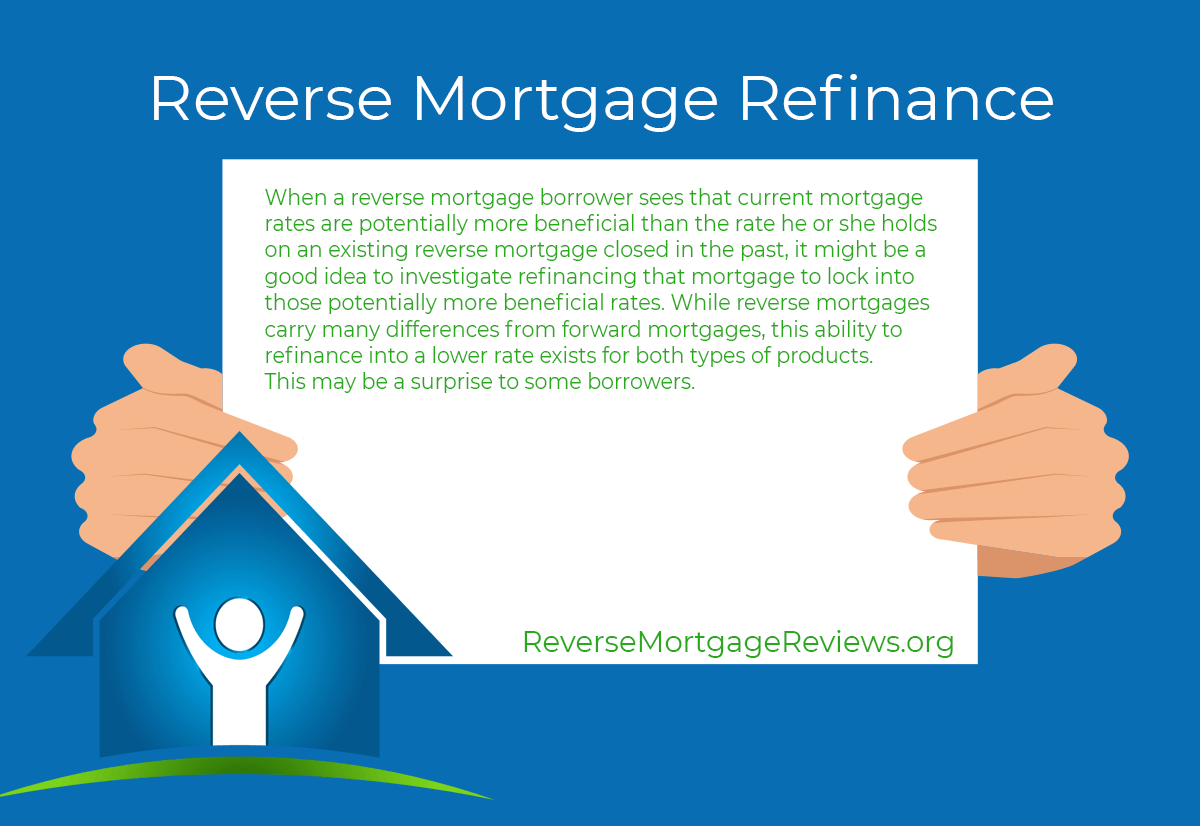When It’s Wise to Refinance Your Reverse Mortgage
Mike Branson Jr. – Author
Mike Branson Jr. has 25 years of experience in the mortgage banking industry. He has devoted the past 19 years to reverse mortgages exclusively. Mike has worked in several aspects of the Mortgage industry, including Loan Origination, Underwriting, and Management.Refinancing a Reverse Mortgage
When a reverse mortgage borrower sees that current mortgage rates are potentially more beneficial than the rate he or she holds on an existing reverse mortgage closed in the past, it might be a good idea to investigate refinancing that mortgage to lock into those potentially more beneficial rates.
While reverse mortgages carry many differences from forward mortgages, this ability to refinance into a lower rate exists for both types of products. This may be a surprise to some borrowers.
Existing reverse mortgage customers across the country certainly do have the ability to refinance their existing reverse mortgage loan, but like the comparison between traditional forward and reverse mortgage products themselves, a reverse mortgage refinance may work a little differently on the reverse side.
In this article you will learn:
- How reverse mortgage refinances are possible
- What the requirements are for refinancing a reverse mortgage
- When a reverse mortgage refi might make sense
How do reverse mortgage refinances work?
Reverse mortgage refinances are conceptually similar to the refinances borrowers might seek out on the traditional mortgage side, in that you basically have to qualify once again for a new reverse mortgage and go through the loan closing process. The good news about that, however, is that existing reverse mortgage customers will encounter much of the same criteria that likely saw them qualify for a reverse mortgage the first time around, depending on when that first loan was originated.
For instance, new reverse mortgage program rules handed down by the federal government to the Federal Housing Administration (FHA)’s Home Equity Conversion Mortgage (HECM) program ? which your reverse mortgage is most likely to be ? arrived in 2017 and may change some of the qualifying criteria at application.
For the most part, though, you’ve likely been to this proverbial “dance” before and aren’t likely to find too many surprises as you look for a refinance opportunity. Basically, getting a new reverse mortgage to replace your existing one could mean some subtle changes, depending on when your original loan closed. Maybe it was a new rate that motivated you to investigate getting a refi in the first place, or perhaps some new rule handed down by the government is something you want your loan to reflect.
It is also possible that you’re looking at changing your disbursement options, and all of these details can change depending on your new loan’s terms.
What are the requirements for refinancing a reverse mortgage?
The basic requirements to qualify for a reverse mortgage refinance are similar to the requirements on an original reverse mortgage transaction.
These include:
- The prospective borrower must be at least 62 years of age or older.
- The home at the center of the reverse mortgage must be the borrower’s primary residence.
- There must be enough equity in the home to qualify for a reverse mortgage.
- The borrower has to demonstrate his or her ability to keep up with ongoing financial obligations related to the home, including paying property taxes, homeowner’s insurance and (if applicable) homeowners association (HOA) fees on time.
- The home must be maintained to FHA standards as long as the borrower lives in it.
- The property itself must also meet FHA standards at the time of application.
When might a reverse mortgage refinance make sense?
For many people, answering this question comes down to the interest rate environment: if you see that current reverse mortgage rates are significantly more beneficial than they were when you first originated your own reverse mortgage loan, looking into a refi could potentially help to further improve your financial situation.
In many instances, home price appreciation will lead existing borrowers to pursue refinancing options. In markets where homes have appreciated significantly since the original transaction, there may be more equity for borrowers to tap into, providing a greater cash-out opportunity or higher monthly disbursements in the case of a loan with tenure payments.
There may be other benefits to refinancing as well. For example, if you got an original reverse mortgage loan without your spouse being named on it, a refinance would be a good opportunity to add your spouse to the loan to improve the chances that he or she will be able to stay in the home in the event that the primary borrower passes away.
That’s not to say that even with a better rate, you should automatically consider a refinance transaction. When exploring a reverse mortgage refinance, the borrower should keep in mind that a refinance is best justified when there is a material gain to be made from going through the refinancing process, and the National Reverse Mortgage Lenders Association (NRMLA) and published in a 2009 Mortgagee Letter from FHA has determined a helpful, easy-to-remember rule which could help someone to determine whether a reverse mortgage refinance makes sense:
- The increase in the mortgagor’s principal limit exceeds the total cost of the HECM refinance by an amount equal to five (5) times the cost of the transaction; and
- The time between the closing on the existing HECM and the application for refinancing does not exceed five years.
Taking all this information into consideration should help you better understand whether a reverse mortgage refinance could be the right loan for you. As always, it is best to consult your trusted advisors to help determine whether this is the best course for you to take.
|
No Comments on “When It’s Wise to Refinance Your Reverse Mortgage”
|


